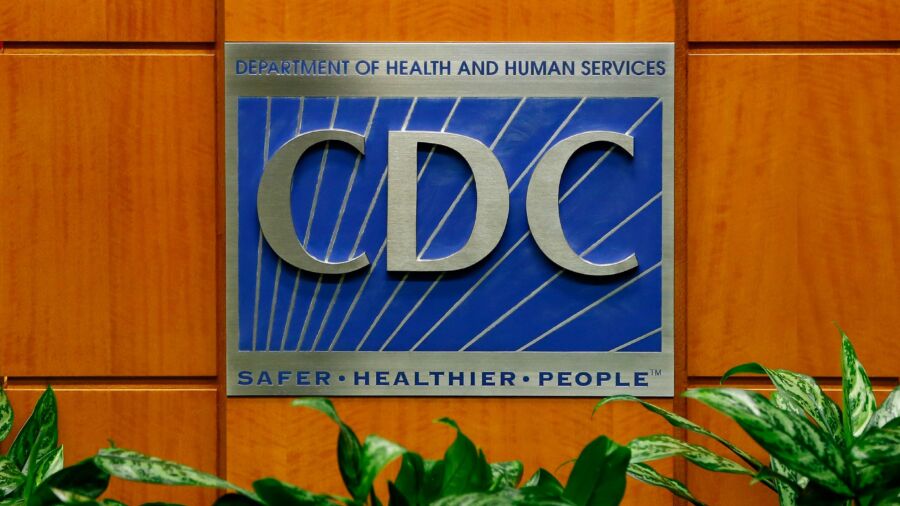According to a recent report by the Center for Disease Control and Prevention (CDC), just over one-third of Hepatitis C Virus (HCV) infections in the United States since 2013 have been cured—although effective medical treatments are available.
The CDC identified more than 1.7 million Americans as having been infected with the virus between 2013 and 2021. Despite RNA viral testing and highly successful and easy-to-take oral antiviral treatment being readily available, less than 90 percent of those estimated to have been infected were even tested.
The CDC is reportedly also unclear on how many of those who have recovered from HCV in that time period received treatment, or whether their infections healed through natural processes.
Hepatitis C on the Rise
Hepatitis C is one of the leading causes of death from infectious disease in the United States, with nearly 15,000 death certificates listing HCV as an underlying or contributing cause of death in the United States in 2020.
A viral infection that attacks the liver, its symptoms include joint pain, abdominal pain, and fatigue, among others. Symptoms of an acute infection also include an upset stomach, vomiting, fever, and dark urine. Not every acutely infected person exhibits symptoms of the disease, however, making testing and treatment regimes even more challenging.
The CDC states that in patients with chronic HCV, symptoms may be less than obvious. If an infection remains undetected, however, it can affect liver function and lead to chronic liver issues that include cirrhosis and cancer.
“Chronic hepatitis C can be a serious disease resulting in long-term health problems, including liver damage, liver failure, cirrhosis, liver cancer, and even death. It is the most common reason for liver transplantation in the United States,” according to the CDC.
The disease also affects between 5 and 10 percent of infants born to mothers with HCV, with babies becoming infected either via in-utero transmission or during the peripartum period. A sharp increase in such cases was seen between 2011 and 2014, according to the CDC.
Tackling HCV
“This simplified national HCV clearance cascade identifies substantial gaps in cure nearly a decade since highly effective direct acting antiviral (DAA) agents became available and will facilitate the process of monitoring progress toward national elimination goals,” the CDC report states.
The virus is almost always spread through contact with even minute quantities of the blood of an infected person. It can be treated using DAAs, with these treatments usually lasting between 2 and 3 months—and generally leading to full recovery in the majority of cases.
A recent directive (pdf) introduced by the Department of Health and Human Services (HHS), known as the “Viral Hepatitis National Strategic Plan,” aims to eliminate viral hepatitis as a public health threat in the United States.
“The Hepatitis Plan provides goal-oriented objectives and strategies that can be implemented by a broad mix of stakeholders at all levels and across many sectors, both public and private. It serves as a mechanism to identify and leverage areas of synergy and resources and to avoid duplication of efforts across agencies,” according to the HHS.
“The Hepatitis Plan identifies disproportionately impacted populations with higher rates of hepatitis incidence, prevalence, and mortality (i.e., priority populations) so that federal agencies and other stakeholders can focus their resources to realize the greatest impact,” the directive states.
“Interwoven throughout the Plan and highlighted in Goal 5 is the critical need to integrate viral hepatitis prevention, screening, diagnosis, and treatment, including breaking down operational and funding silos among HIV, sexually transmitted infections (STIs), substance use disorders, and other public health efforts.”
This tallies with the CDC’s latest report, in which it outlines the necessity for increased access to testing and treatment options.
“It is essential that increased access to diagnosis, treatment, and prevention services for persons with hepatitis C be addressed to prevent progression of disease and ongoing transmission and achieve national hepatitis C elimination goals,” according to the CDC’s Morbidity and Mortality Weekly Report.
According to the CDC, chronic HCV is not confined to any specific age group. While infections were previously more notable in the baby-boomer generation, millennials have now become the fastest-growing age group with HCV infections.


